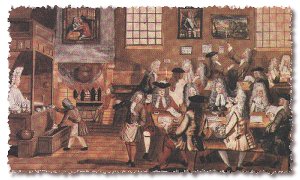









|
 |

courtesy the Newseum News History Gazette
|
A
1668 painting documents
how news spreads in England during that time period – through
the local coffee houses. |
When certain people speak, we take notice. The same rule applies to print
journalism. We learn to trust certain writers' perspectives on issues,
or at least to anticipate their side of the issue. Even if we anticipate
we'll disagree, we'll read their work to gain fodder for our argument
-- or simply to be entertained. These writers who have developed a distinctive
voice in their work are our columnists. From fashions to movies to national
politics, they may anger us, entertain us, or reinforce our own positions
-- but they will usually make us think.
Is it just a matter of opinion? Perhaps, but columnists play a vital
role in shaping our thinking, and high school journalists can play the
same role for their audiences. The writer may be the one with a special
skill for interpreting sports, a quirky sense of humor, or a keen insight
into the trappings of the teenage life. The writer can become the voice
of his reader -- or a prick in his conscience.
The role of columnist carries with it a responsibility. This section
of the Web site will help the reader to scrutinize the purpose, tone,
and reliability of a columnist. In addition, the section explores eight kinds
of columns by professional writers and offers tips for students on determining
one's audience, developing one's voice, and organizing the column.
|


